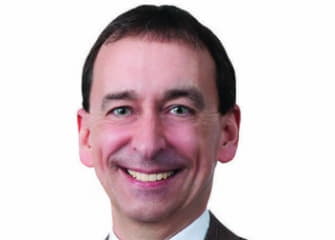
Newt Fowler
This past week, the Economic Alliance hosted a panel to explore the future of innovation districts and the importance of placemaking in Greater Baltimore. First, some definitions. Innovation districts are geographic areas where companies and institutions cluster along with start-ups, incubators and accelerators.Placemaking can be described as a multilayered approach to planning, design and management of spaces designed to achieve specific goals, such as community vitality or business competitiveness. The Economic Alliance event was one of best local discussions of importance of these concepts and of how our region is doing. This event was the first in a quarterly series which will focus on critical economic development issues facing Greater Baltimore. The panel tackled these concepts from four different perspectives. What follows are my own perspectives on the conversation that morning.
Innovation Districts Generally. Jennifer Vey of the Brookings Institution spoke broadly about innovation districts and underscored several critical themes of what makes them succeed or struggle. Successful districts are organic, and while have geographic dimensions, the area is shaped more by the proximity of clustering companies and supporting organizations, as well as housing and amenities. Most are anchored by a significant institution, often a research university. Successful districts focus on key advanced industry clusters for that region and ensure that their clusters are able to access the talent, resources and infrastructure needed to succeed. What impedes efforts to establish an innovation district often come from prescriptive efforts (often government) that, while well intentioned, impinge rather than help; those that struggle often focus ineffective incentives and efforts within absolute boundaries, or have a field of dreams view that hopes that declaring a district to exist will make it so.
Baltimore’s UM BioPark. Jane Shaab of the UM BioPark, spoke next. If you haven’t seen what has risen on the west side of Martin Luther King Blvd, you’re missing out on a true renaissance in our city. UM BioPark is a success by almost any measure. But what was telling and refreshing in her presentation was the recognition that UM has regarding other key measures of the health of an innovation district. Fully leased facilities aren’t enough. And UM realizes that success needs to be measured in terms of community engagement, from opening the park to local use, to finding ways to ensure employment opportunities extend to their neighbors. They also understood that community engagement, quality of life and amenities need to be thought through early in the development process. These efforts are more than lip service; UM knows that the success of the BioPark as an innovation district now rests on how well it integrates into the life and vitality of the communities from which it rose.
Columbia Gateway. Cathy Ward of COPT spoke of the redevelopment of an immense office park in Howard County, known as Columbia Gateway. Built when companies wanted car friendly convenience but little else, the challenge faced by suburban office parks now is how to reimagine them as places with amenities and life, rather than simply the commute. For the corporate tenants in such parks, they face increased competition for Millennial talent that wants to live, work and play in a more compact and engaging place. Equally impressive is not only COPT’s awareness of the need to meet these needs, but that of Howard County’s leadership, where Howard County Executive Allan Kittleman and his economic development team are focusing an immense amount of effort on making Columbia Gateway one of the leaders in suburban Innovation Districts.
How Placemaking Fits In. Finally, Kelly Ennis of The Verve Partnership, spoke passionately of the importance of place – and how design fits critically into the mix of a vibrant community, right down to the workspace. Kelly underscored that no business or community need is the same and that space, when well designed (irrespective whether we’re speaking of a community or a business), achieves very specific goals. It’s hard to get the formula right as it requires a willingness to let strategic insight drive design, avoiding biases and misconceptions in the process. Cool space involves more than kegs and foosball.
EAGB’s Role. I cannot underscore how critical it is for Greater Baltimore to have such conversations. We’ve allowed others to define our community – conversations such as this one on innovation districts and placemaking allows us to define ourselves. Shannon Landwehr, CEO of the EAGB, has more such conversations coming. And that’s a good thing for our region.
With more than 30years’ experience in law and business, Newt Fowler, a partner in Womble Carlyle’s business practice advises many investors, entrepreneurs and technology companies, guiding them through all aspects of business planning, financing transactions, technology commercialization and M&A. He chairs the Board of TEDCO and serves on the Board of the Economic Alliance of Greater Baltimore. Newt can be reached at nfowler@wcsr.com.


